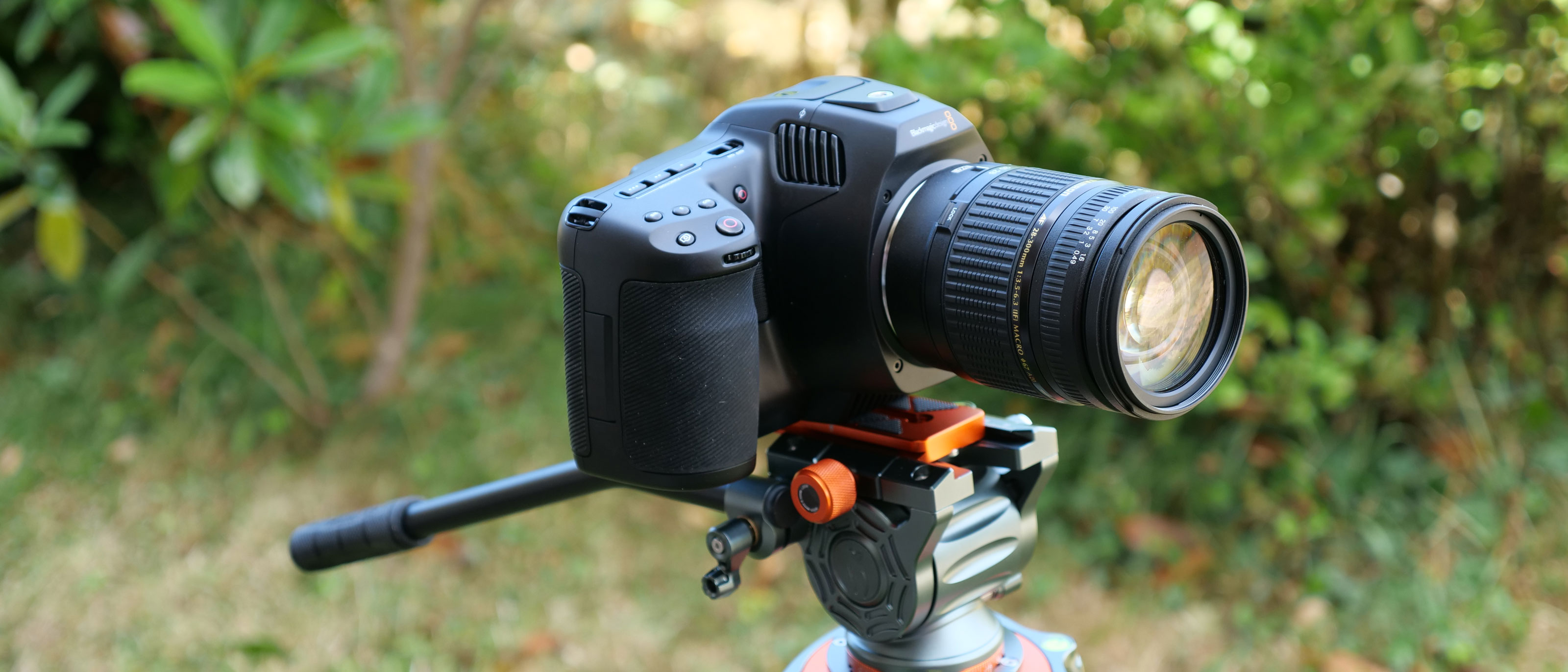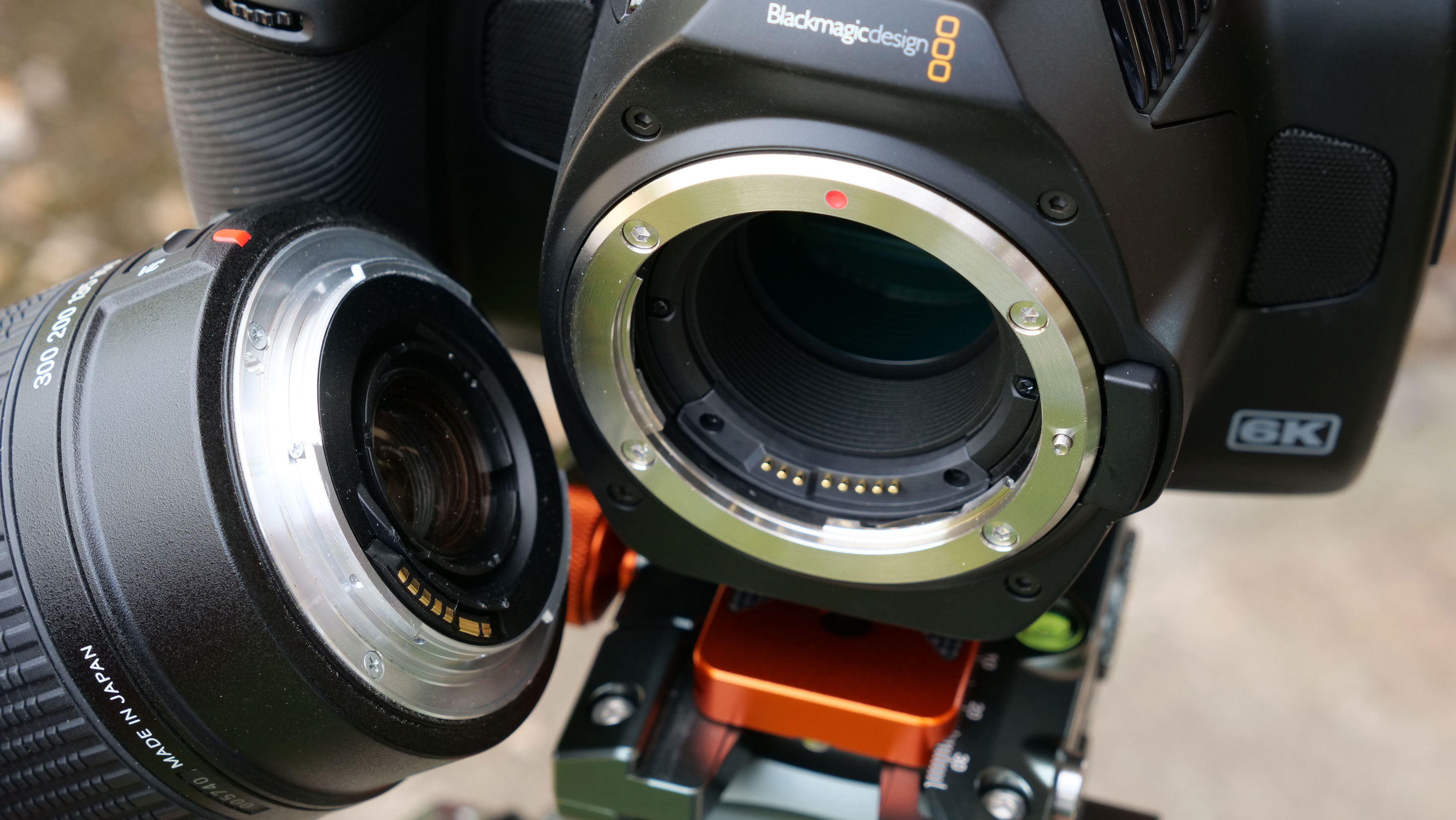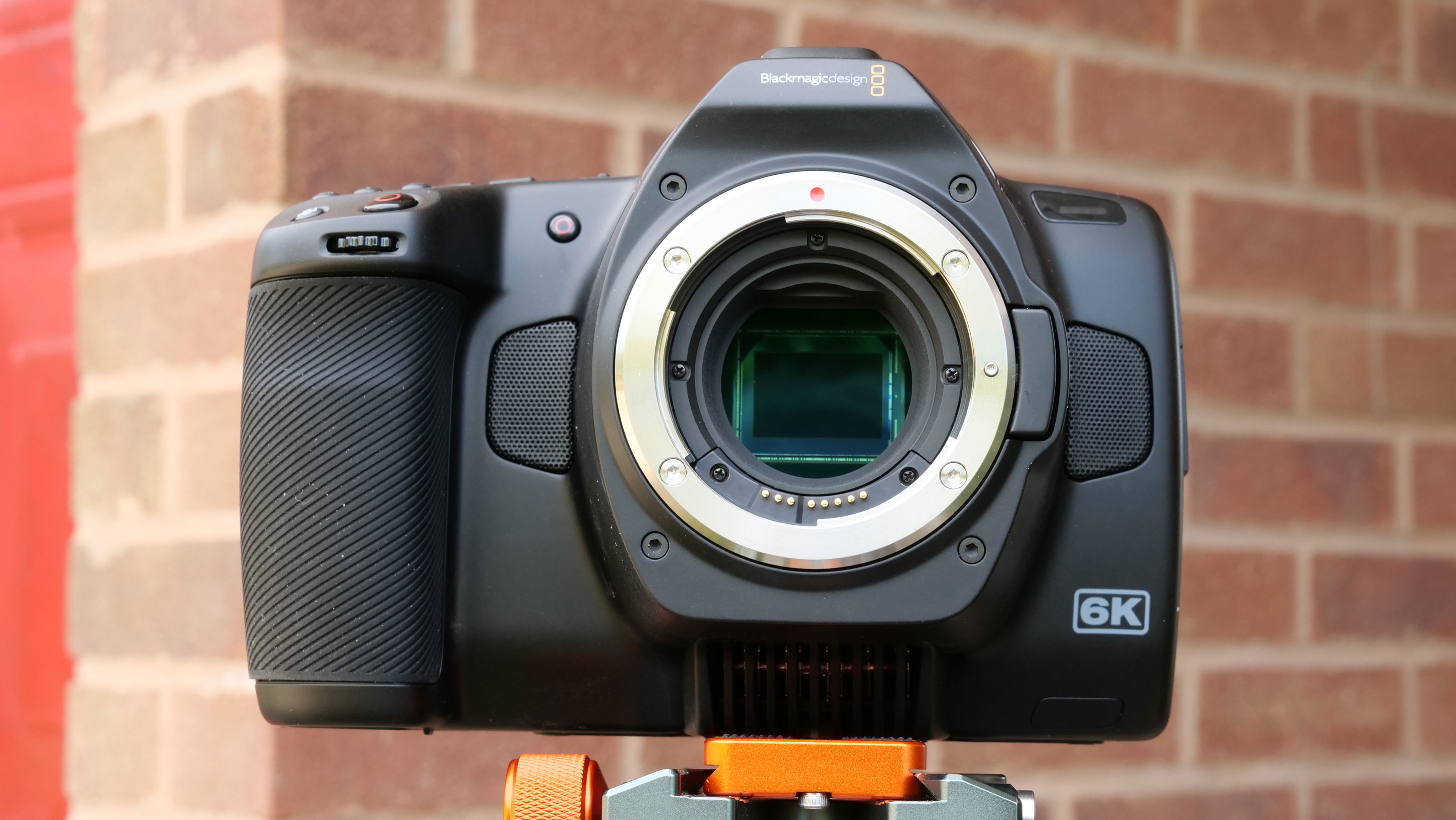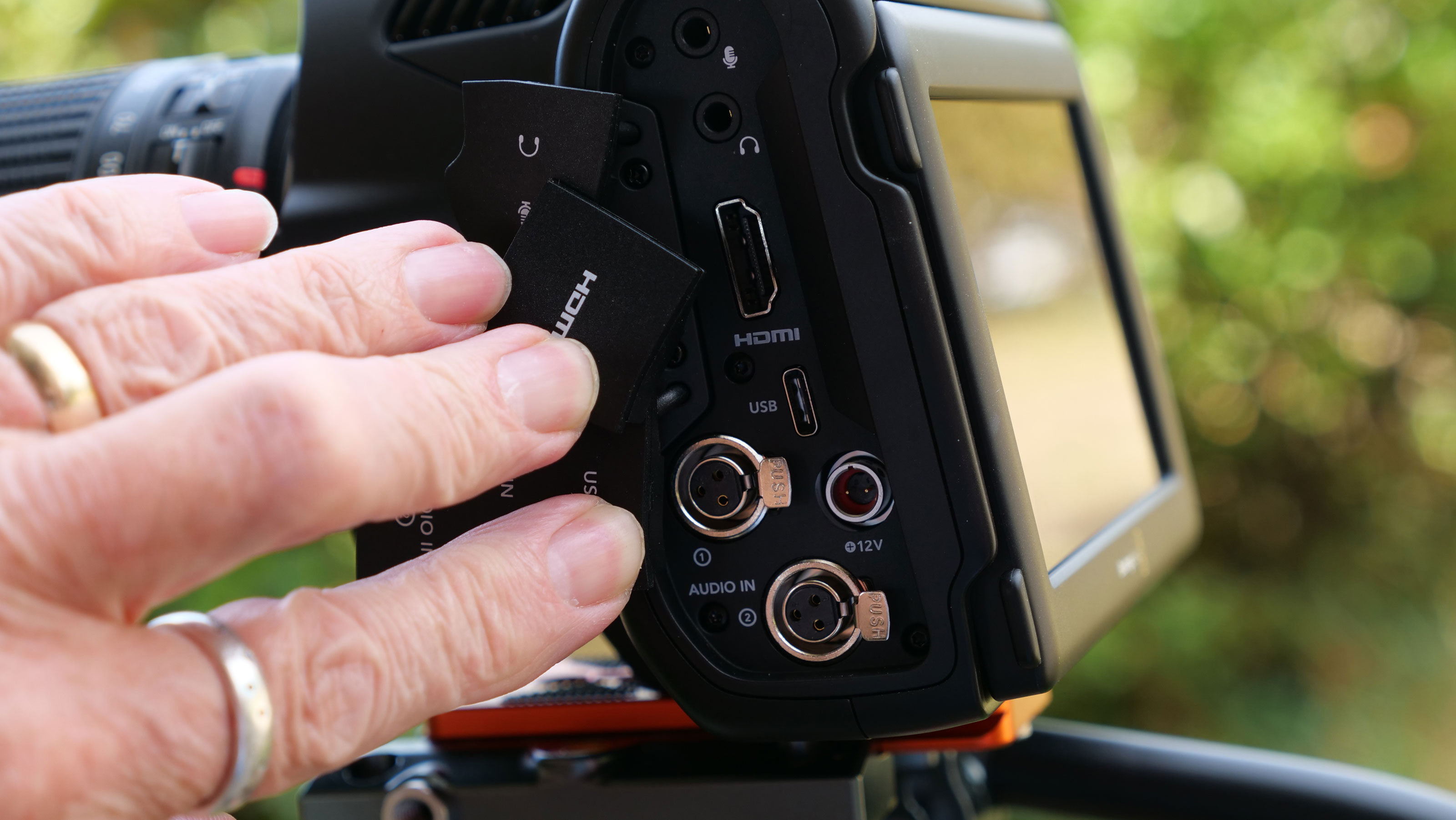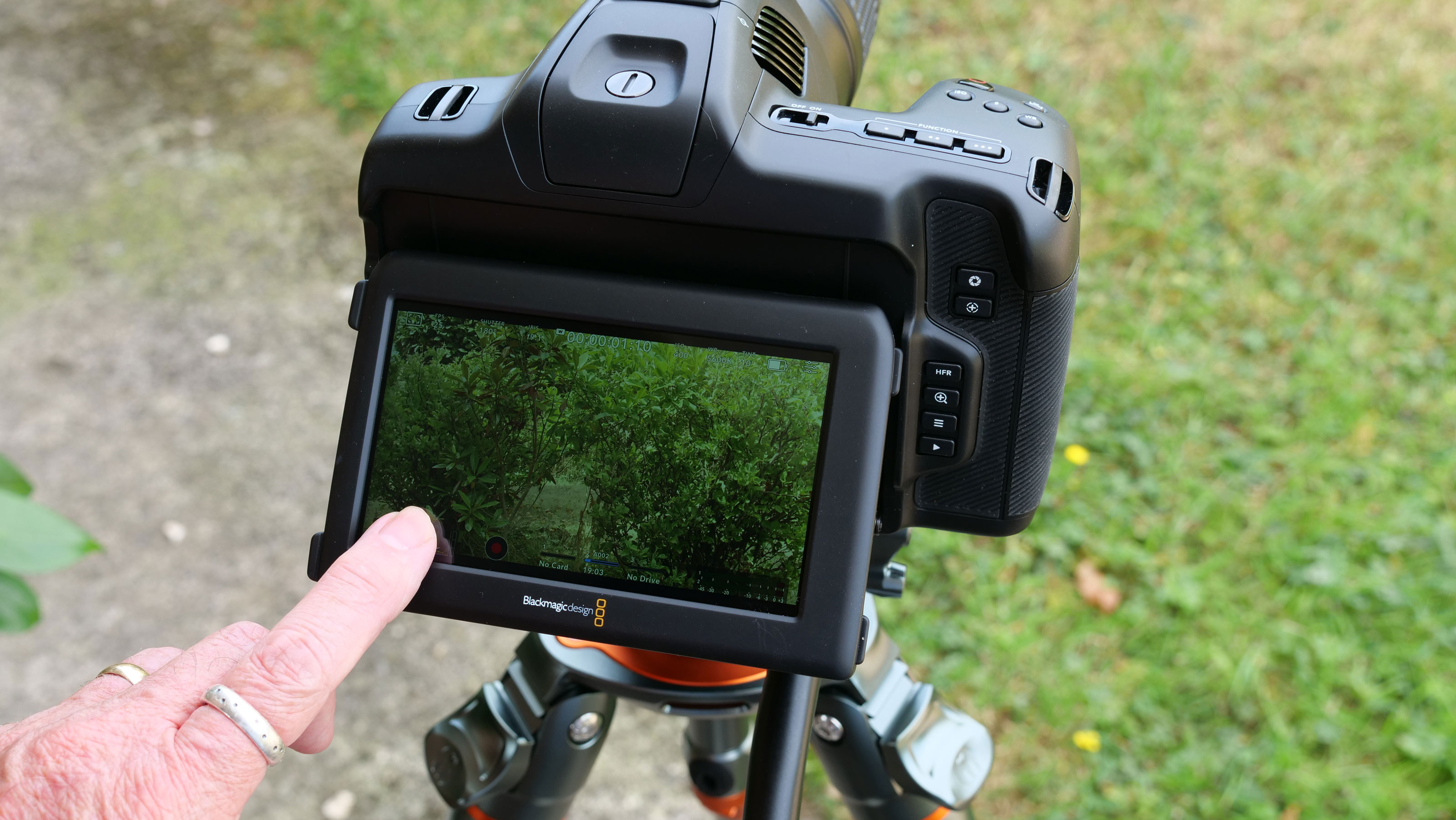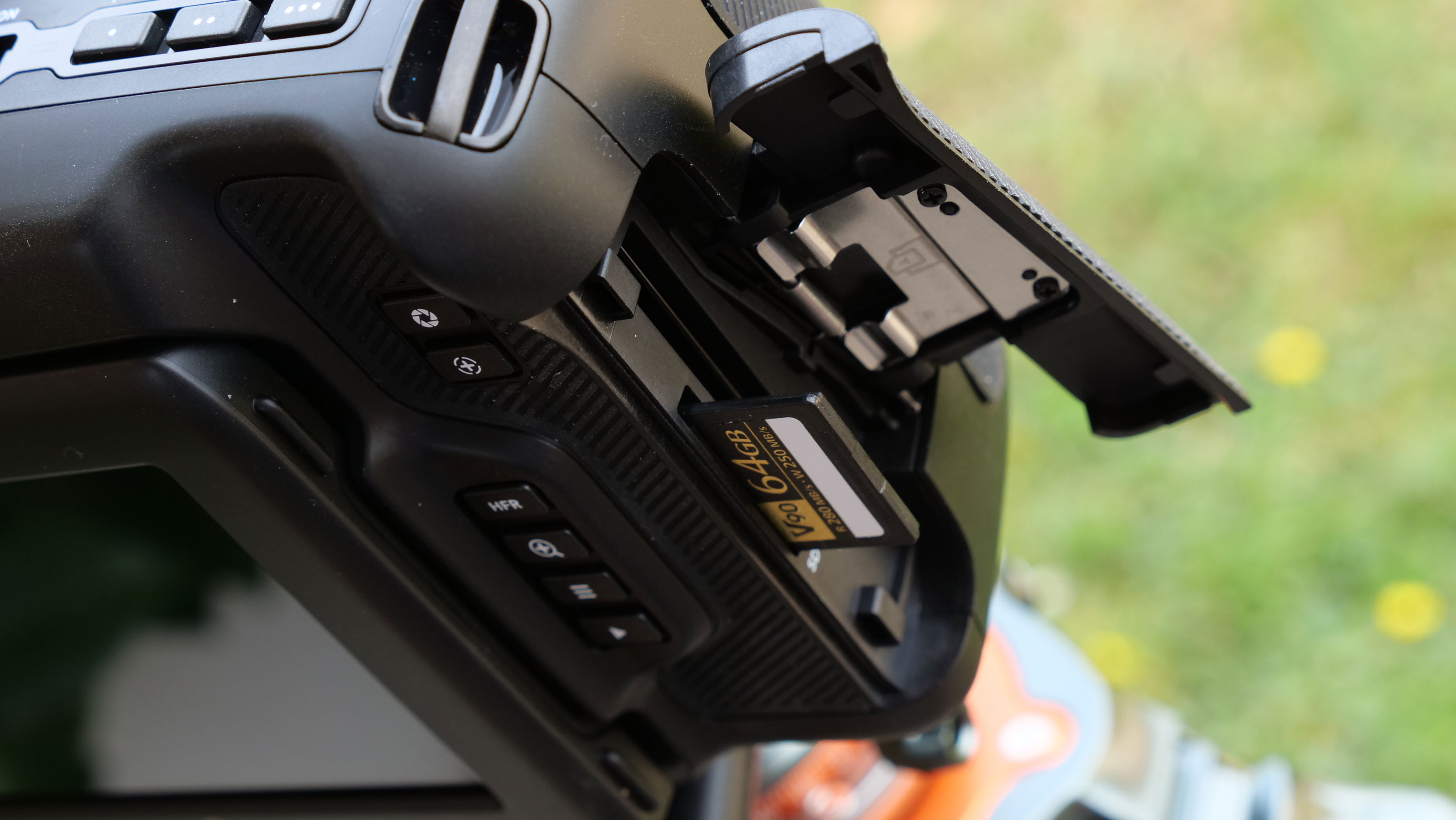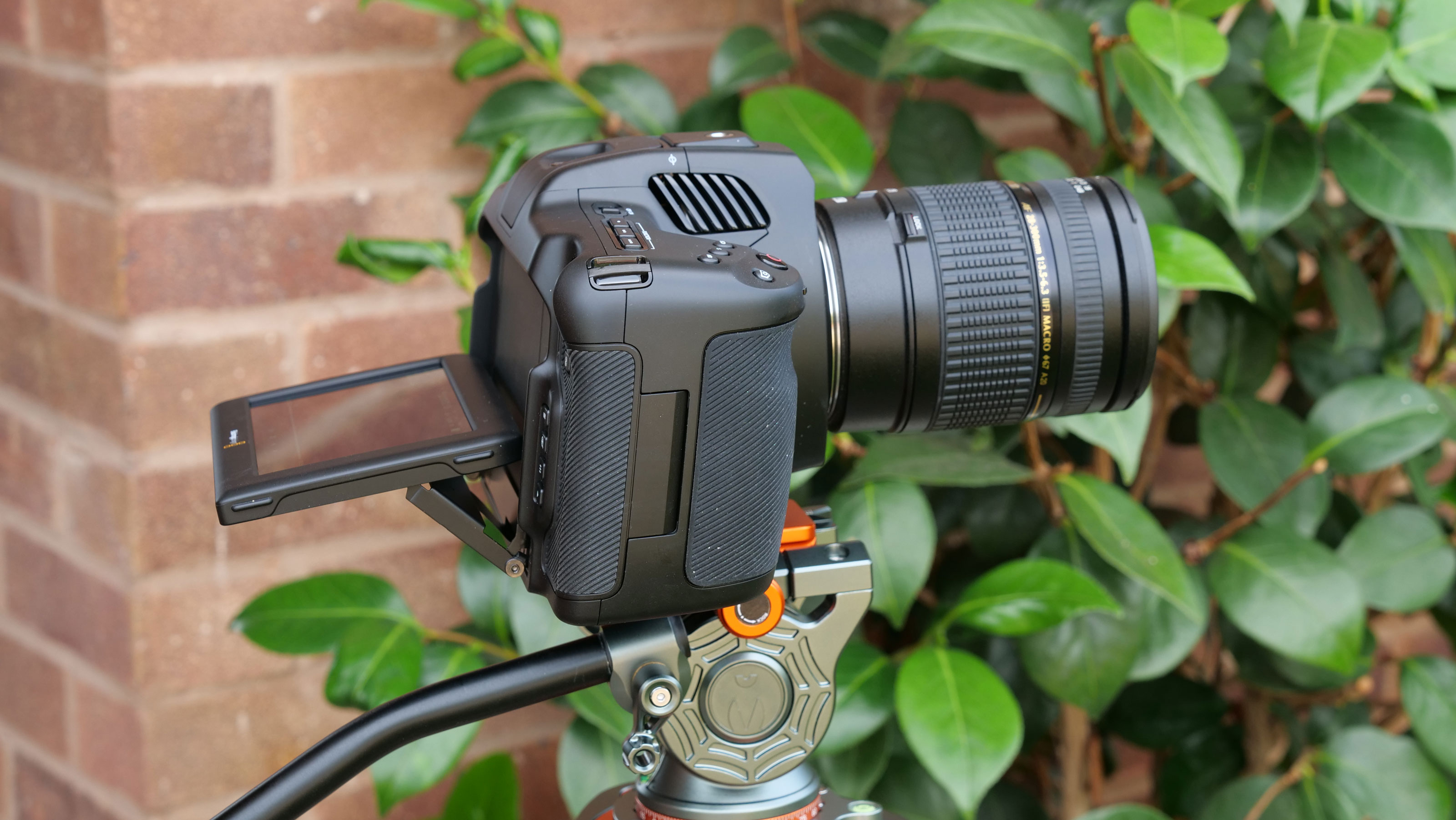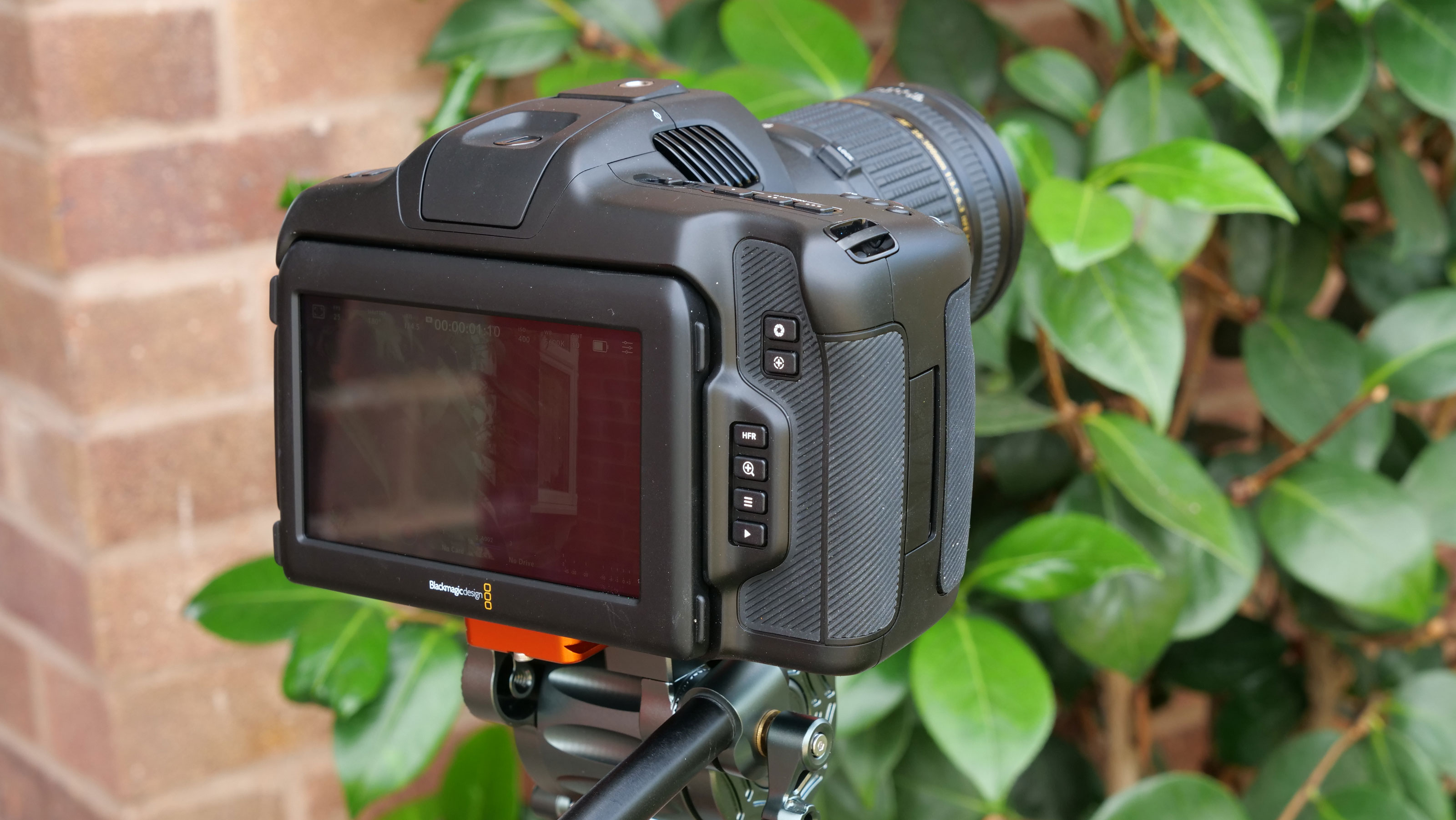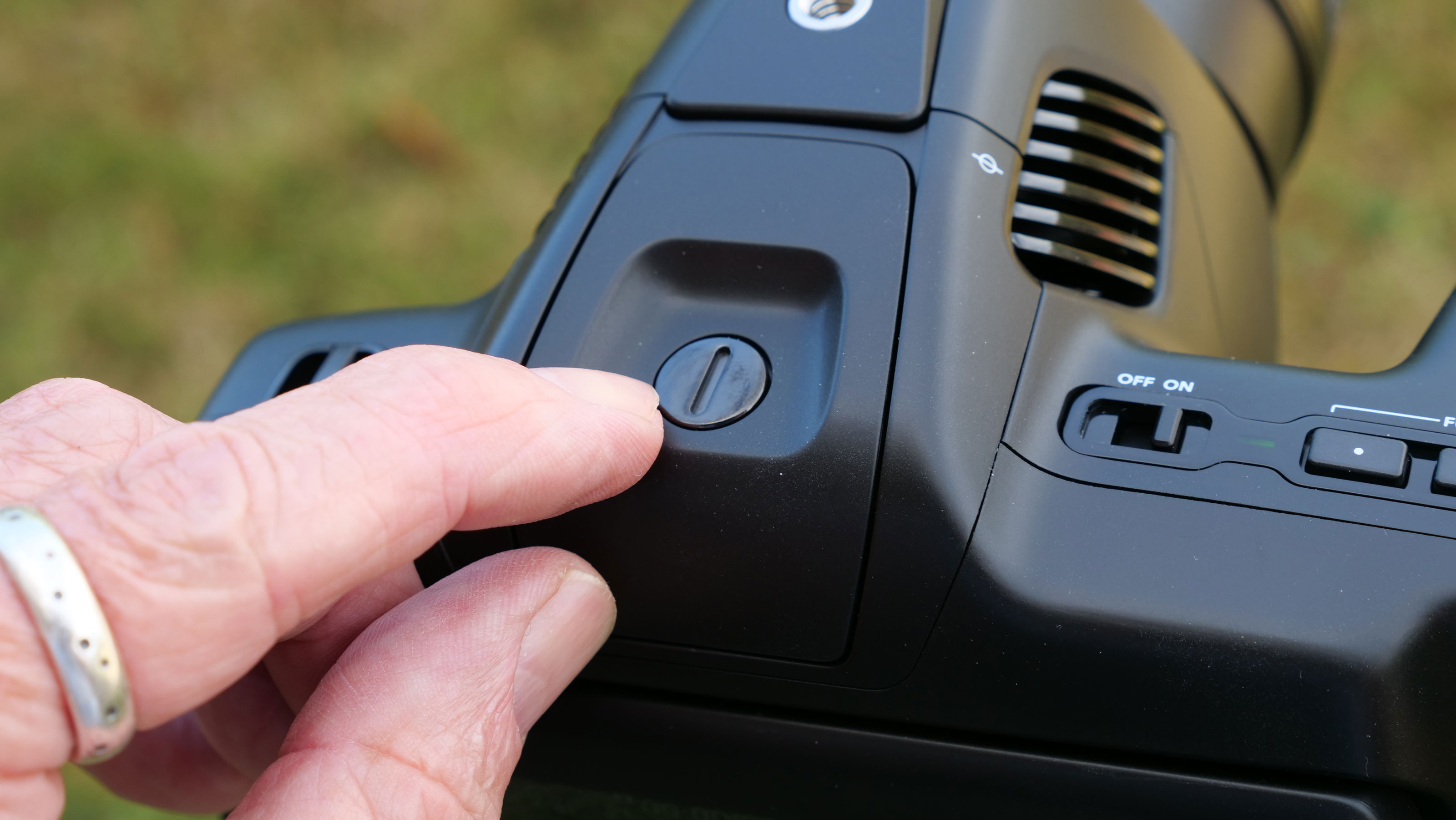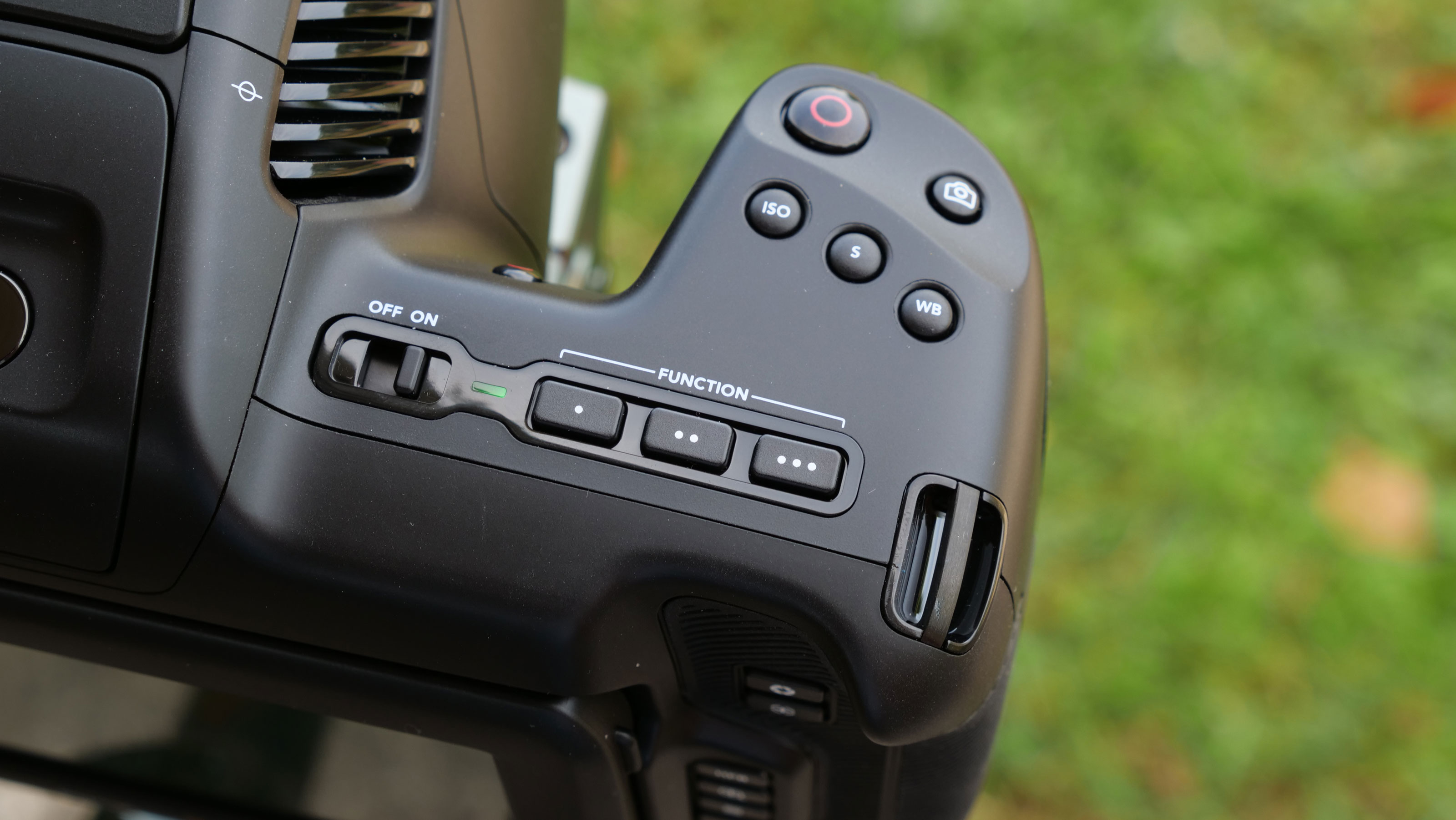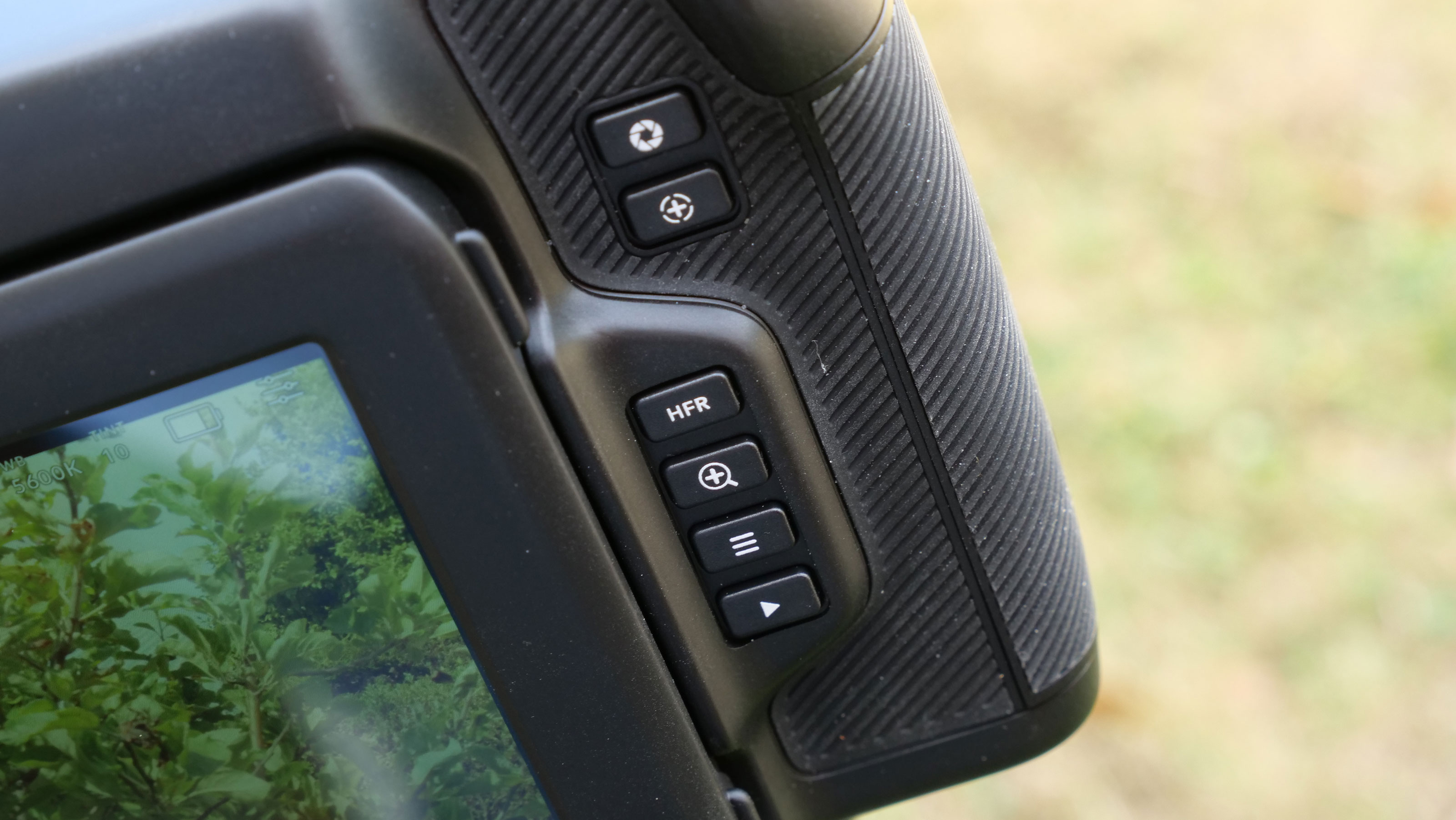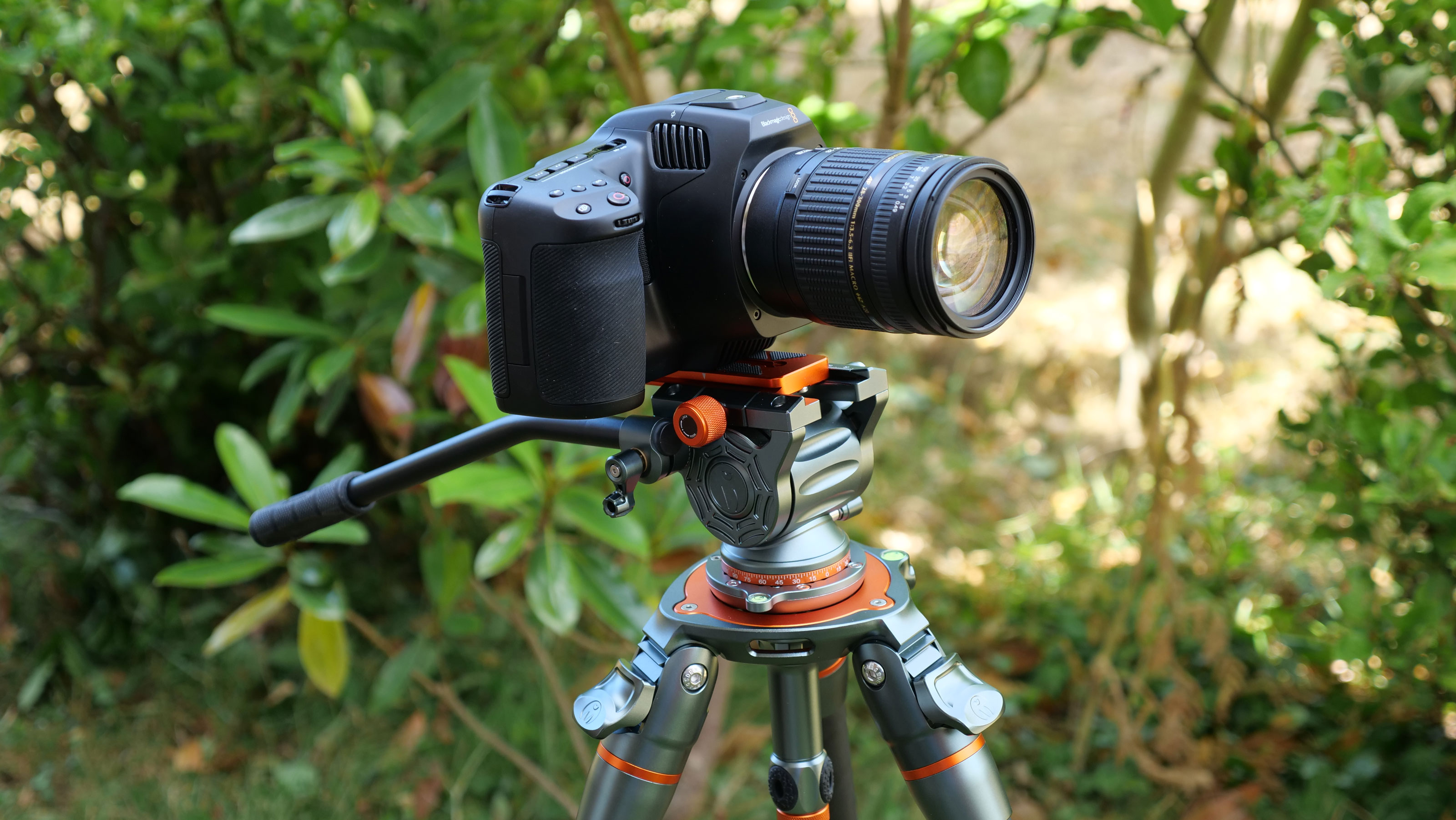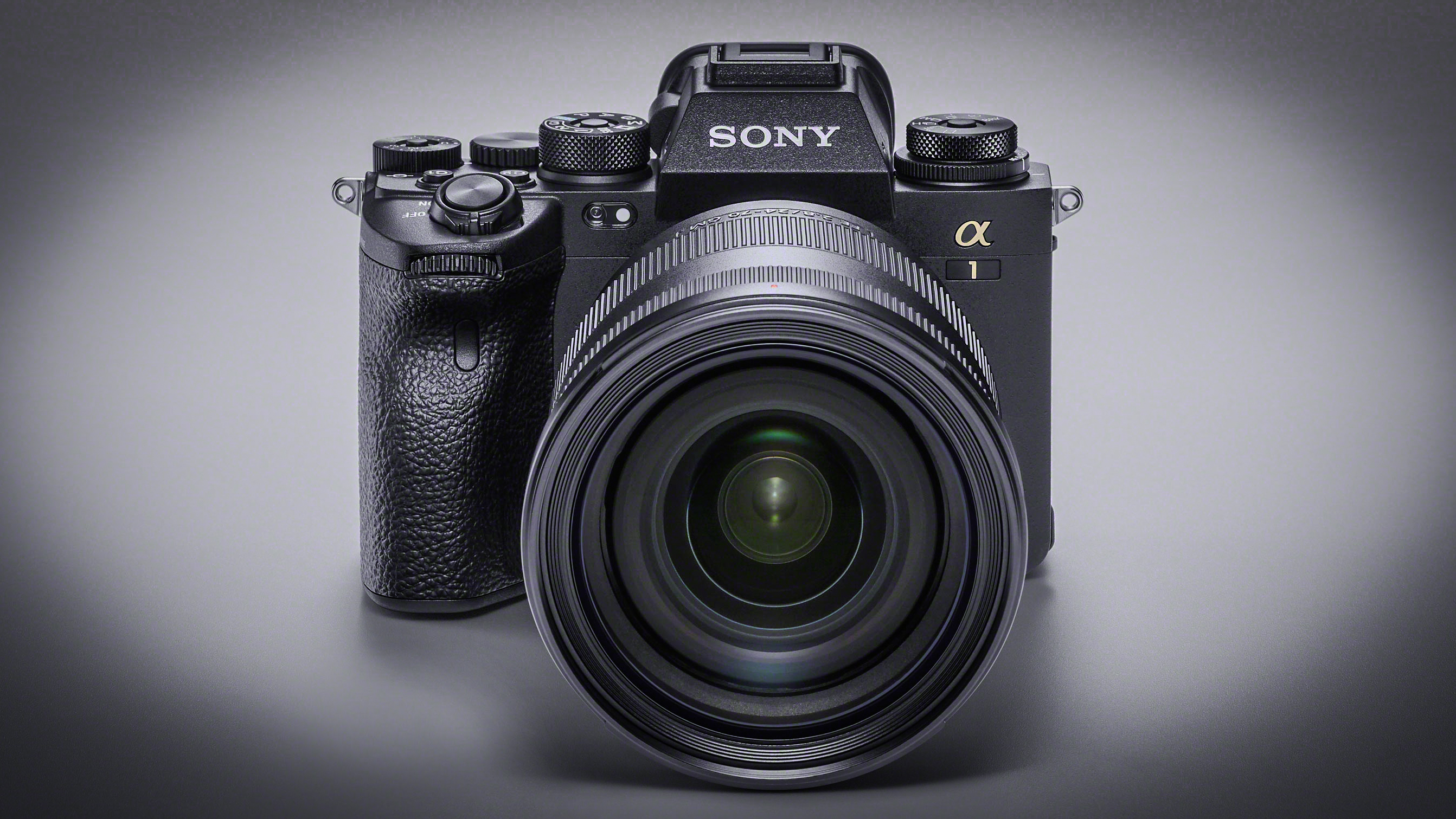Digital Camera World Verdict
Appearances can be deceptive. The Blackmagic Pocket Cinema Camera 6K G2 might look like an upscaled mirrorless camera, but it’s a completely different beast altogether. It’s only the price that puts in the same ballpark. This is an out-and-out cinema camera that raises the bar for filmmaking features but demands know-how and effort in return.
Pros
- +
Huge 5-inch touchscreen
- +
Excellent big-button interface
- +
ProRes and Blackmagic RAW codecs
- +
Choice of storage media, from SD to SSD
- +
Excellent connectivity
Cons
- -
Screen often hard to see in daylight
- -
Gyro stablization but only in post
- -
No continuous AF
- -
Big and heavy
Why you can trust Digital Camera World
The Blackmagic Pocket Cinema 6K G2 is a new variant in the company’s Pocket Cinema camera. These are serious cinema cameras designed to look and handle like regular handheld cameras and at a price which frequently undercuts them.
The range started off with the MFT format Blackmagic Pocket Cinema Camera 4K, still on sale today, then moved on to the larger Blackmagic Pocket Cinema 6K, with a Canon EF lens mount and Super35 sensor (both very widely used in the cinema industry), a 6K Pro version and now this Blackmagic Pocket Cinema 6K G2 model, which replaces the original 6k and add some but not all of the features in the Pro version – but without an increase in price.
The chief differences between the G2 and the Pro seem to be that the Pro version has built in ND filters and a brighter display – both of which played a part during our testing.
Specifications
Sensor: 23.10mm x 12.99mm (Super 35)
Lens Mount: Canon EF
Dynamic Range: 13 Stops.
Dual Native ISO: 400 and 3200
Shooting Resolutions: 6144 x 3456 (6K) up to 50 fps, 6144 x 2560 (6K 2.4:1) up to 60 fps, 5744 x 3024 (5.7K 17:9) up to 60 fps, 4096 x 2160 (4K DCI) up to 60 fps, 3840 x 2160 (Ultra HD) up to 60 fps, 3728 x 3104 (3.7K 6:5 anamorphic) up to 60 fps, 2868 x 1512 (2.8K 17:9) up to 120 fps, 1920 x 1080 (HD) up to 120 fps
Built in ND Filters: None
Focus: Single-shot AF using compatible lenses.
Screen: 5-inch tilting touchscreen, 1920 x 1080.
Storage: 1 x CFast card slot, 1 x SD UHS‑II card slot, 1 x USB-C 3.1 Gen 1 expansion port for external media for Blackmagic RAW and ProRes Recording
Formats: Blackmagic RAW 3:1, 5:1, 8:1, 12:1, Q0, Q1, Q3 and Q5 at 6144 x 3456, 6144 x 2560, 5744 x 3024, 4096 x 2160, 3728 x 3104 and 2868 x 1512 with film, extended video, video dynamic range or custom 3D LUT embedded in metadata. ProRes at 4096 x 2160, 3840 x 2160 and 1920 x 1080 with film, extended video or video dynamic range or custom 3D LUT
Software: DaVinci Resolve Studio for Mac and Windows including activation key
Key features
There are a few key features of this camera worth a closer look. First, it has a Super35 format sensor rather than full frame, and its use of Canon EF lenses might look a little backward in the mirrorless age, but in cinema the Canon EF format is second only in popularity to the PL mount.
And if you’re coming to the camera from a mirrorless or DSLR model, you’re going to have to sacrifice a few home comforts. There’s no continuous AF, so although the 6K G2 can focus for you ahead of recording, you’ll have to do your own manual pull-focusing after that – maybe set up a rig with a follow focus unit.
There are three storage options for recording video. One is a built-in UHS II card slot, which will be fine for the more modest codec and video settings, and there’s also a CFast card slot for higher bitrates – though CFast does seem to be a format on the wane. The third option is one you don’t get on mirrorless cameras, which is the option to record straight to an SSD via the cameras USB 3.1 port. (A fourth option would be to connect an external recorder/monitor.)
The best camera deals, reviews, product advice, and unmissable photography news, direct to your inbox!
One more thing to note is that although you can set the 6K G2 for ready-to-share video recording, it’s really set up for a grading workflow, and since it’s got Blackmagic’s own RAW format, you’ll probably want to use it – or the set of four Apple ProRes options. If you already have a finished grade to work with, you can install it to the camera as a LUT.
Build and handling
This is a big camera. It gets even bigger when you put a lens on the front because the body has to accommodate the extra flange depth of the EF mount lenses, even if it doesn’t have a mirror. Officially, it only supports EF lenses, but we've heard from users who use EF-S lenses too. One of ours (a Canon EF-S 18-55mm kits lens) didn't seem to want to fit but another, a Tokina 12-24mm f/4 APS-C lens, went on fine.
You could use this camera handheld, or attempt to, but in the absence of any in-camera stabilization you would need a lot of skill, or a lot of luck, to get usable footage.
Blackmagic Pocket Cinema cameras do now store gyro movement information thanks to a software update, and this can be used in DaVinci Resolve 18 to stabilize your footage. However, you won't be able to see how well this has worked until you. get down to editing, but by then it's too late. It's not the same as being to check in-camera if the stabilization has been effective.
Despite looking like a handheld camera, this is one that’s going to be most at home on a tripod, on a meaty gimbal or on a rig with other accessories like mics, storage and a monitor.
The buttons work well enough, though the ISO, shutter angle and WB buttons could do with being bigger. The interface is a joy to use, however, and puts the poky little menus on mirrorless and DSLR cameras to shame. With big buttons and simple swipes to go through settings screens, it’s easy to use.
But while this screen is fine for indoor use, it’s hard work outside. We did some shooting in bright sunlight and found it almost impossible to see the settings and could only just make out broad shapes for composition. We tried turning the screen brightness up to maximum, but it didn't help much. If you get this camera for outdoor use, you might want to budget for the optional screw-on EVF or an external monitor bright enough for daylight.
If you want sensible shutter angles and iris settings outside, you’ll also need a variable ND filter for your lens – the main reason for choosing the 6K Pro model over this one.
Performance
We don’t have too much to say about the image quality because we had to raid the cupboards for a couple of EF lenses to use it with, and they weren’t the best examples of modern optical science.
Neither did we test every permutation of codec, frame rate and quality settings, as that would be a lifetime’s work on its own. We have already reviewed the Blackmagic Pocket Cinema Camera 4K and Pocket Cinema camera 6K Pro models and assessed the image quality there.
What we have done is put together a short set of clips captured in the time we spend with this camera. These have not been graded and were shot with the closest suitable setting for straight-from-camera use. It’s clear, though, that even though Blackmagic claims a modest 13 stops of dynamic range, our footage has a lot of shadow and highlight detail.
The Blackmagic Pocket Cinema Camera 6K G2 is only as good as you are. If you're good and you know what you're doing, it's pretty exceptional, but if you're not, it's not going to help you.
Verdict
The Blackmagic Pocket Cinema Camera 6K G2 is extraordinary value for money. There are plenty of mirrorless cameras that cost more than this and do a lot less from a filmmaker’s point of view.
But it’s not really an appropriate comparison. With no in-camera stabilization, no continuous AF and support only for Canon EF lenses, this is not a mirrorless alternative. This is a big, ponderous camera that’s going to be at its best in planned productions and on shoots where you’ve got time to get everything right. And while it can be used as-is, straight from the box, it really needs to be rigged up with extra gear – especially a better screen – to deliver its best work.

Rod is an independent photography journalist and editor, and a long-standing Digital Camera World contributor, having previously worked as DCW's Group Reviews editor. Before that he has been technique editor on N-Photo, Head of Testing for the photography division and Camera Channel editor on TechRadar, as well as contributing to many other publications. He has been writing about photography technique, photo editing and digital cameras since they first appeared, and before that began his career writing about film photography. He has used and reviewed practically every interchangeable lens camera launched in the past 20 years, from entry-level DSLRs to medium format cameras, together with lenses, tripods, gimbals, light meters, camera bags and more. Rod has his own camera gear blog at fotovolo.com but also writes about photo-editing applications and techniques at lifeafterphotoshop.com
